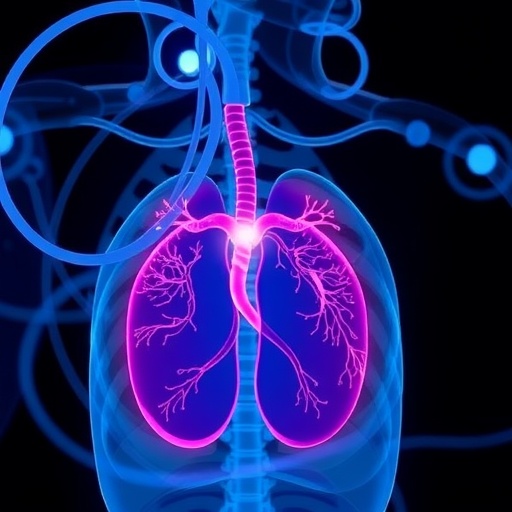
In recent advancements within the field of organ transplantation, a notable shift has been observed towards the utilization of normothermic regional perfusion (NRP) techniques, particularly in the United States. This mode of organ preservation has emerged as a transformative approach by enhancing the viability and functionality of organs harvested for transplantation. The recent correction article by Sellers et al. in the journal Current Transplantation Reports sheds light on the evolving landscape of NRP, elucidating not only its current applications but also its potential future directions in the realm of organ procurement organizations (OPOs).
Understanding the dynamics of organ transplantation necessitates a review of the traditional methods that have dominated the field for decades. Typically, organs are preserved using cold storage techniques, which significantly limits the duration for which they can remain functional outside the human body. Cold ischemia remains a considerable risk factor, often leading to detrimental outcomes post-transplantation. The introduction of NRP as an alternative paradigm offers a solution by maintaining organs at normothermic temperatures while perfusing them with oxygenated blood, thereby ensuring metabolic functions are preserved longer than previously possible.
Normothermic regional perfusion represents a profound leap forward in minimizing the adverse effects associated with cold ischemic time. By maintaining organs at physiological temperatures, the technique allows for continued cellular activity and metabolic processes during the critical window between organ retrieval and transplantation. Studies have illustrated that NRP can enhance organ quality, ultimately leading to better-performing transplants with higher success rates. The implication of this technique is monumental, as it directly addresses the pressing problem of organ shortages, offering hope to countless individuals awaiting life-saving procedures.
The correction published by Sellers et al. underlines the importance of comprehensive assessments and robust methodologies to effectively implement NRP practices across various OPOs. This correction is significant as it builds upon the existing literature, clarifying previous ambiguities while reinforcing the necessity for standardization in NRP protocols. Essential to this is the collaboration between multiple stakeholders, including transplant centers, policymakers, and research institutions, to create frameworks that uphold the highest standards in organ procurement.
Furthermore, the authors delve into the legal and ethical considerations surrounding NRP practices. The intricate balance between preserving life through organ donation and ensuring ethical standards is paramount in the discussion of NRP. There are unique challenges involved when perfusing organs outside of the traditional protocols, which must be navigated carefully to maintain trust among communities and ensure equitable access to transplantation for all patients in need.
While the scope of NRP continues to expand, it remains crucial to emphasize the ongoing research and clinical trials that will substantiate its efficacy and safety. The findings from the latest studies referenced in the correction article provide vital insights that are shaping tomorrow’s transplantation landscape. Such investigations aim to refine NRP protocols, evaluate long-term outcomes, and ultimately enhance the accessibility of organs for patients in dire situations.
In addition to improving transplant outcomes, NRP techniques may have implications for expanding the donor pool. As the medical community explores novel avenues for eliciting organ donations, the ability to preserve organs for extended periods without immediate transplantation may lead to increased willingness among potential donors and their families. This could catalyze a new era of organ donation where the fears associated with rapid organ decline are mitigated.
Moreover, the economic aspects of NRP and its integration into existing healthcare systems is a critical area of exploration. There is potential for substantial cost savings associated with improved organ viability and reduced post-transplant complications. Such financial implications may persuade health systems to adopt NRP protocols as standard practice, ultimately benefiting patients, providers, and stakeholders alike.
In summary, the landscape of organ transplantation is on the brink of transformation, and NRP holds promise as a game-changing technique. The insights provided by Sellers et al. not only correct the record but also advance our understanding of this vital topic. As further research is conducted, and as the medical community adapts to these progressive methodologies, the hope remains palpable—that more lives can be saved, that donor organs can be utilized to their fullest potential, and that the waiting lists, which have persisted for far too long, can finally begin to dwindle.
As we look to the future, coordination and education will be pivotal in ensuring that NRP is not just an innovative idea but a standard practice across OPOs throughout the United States and beyond. Ensuring that all parties involved—the families of donors, recipients, and healthcare providers—are on the same page will facilitate seamless operations and ultimately heighten the success rates of organ transplantation. The clarifications and corrections made by Sellers et al. pave the way for ongoing dialogue and advancement in this crucial area of medicine, empowering an educated approach towards more efficient organ procurement strategies in the years to come.
Through increased awareness, continued research, and commitment to ethical practices, the full potential of NRP may soon be realized, thus leading us to a future where more lives can be transformed through the gift of organ donation.
Subject of Research: Normothermic Regional Perfusion in Organ Transplantation
Article Title: Correction to: Organ Procurement Organization-Based Normothermic Regional Perfusion in the US: Current State and Future Direction
Article References:
Sellers, M.T., Strom, C., Clapper, D.C. et al. Correction to: Organ Procurement Organization-Based Normothermic Regional Perfusion in the US: Current State and Future Direction. Curr Transpl Rep 12, 24 (2025). https://doi.org/10.1007/s40472-025-00478-4
Image Credits: AI Generated
DOI: 10.1007/s40472-025-00478-4
Keywords: NRP, organ transplantation, organ procurement organizations, cold ischemia, metabolic preservation, ethical considerations, donor pool expansion, healthcare economics
Tags: advancements in organ transplantationcold ischemia risk factorsCurrent Transplantation Reports findingsenhancing organ viabilityfuture directions in organ procurementminimizing adverse transplant outcomesnormothermic regional perfusionNRP applications in transplantationorgan preservation techniquesorgan procurement organizationsoxygenated blood perfusiontransformative approaches in organ donation




